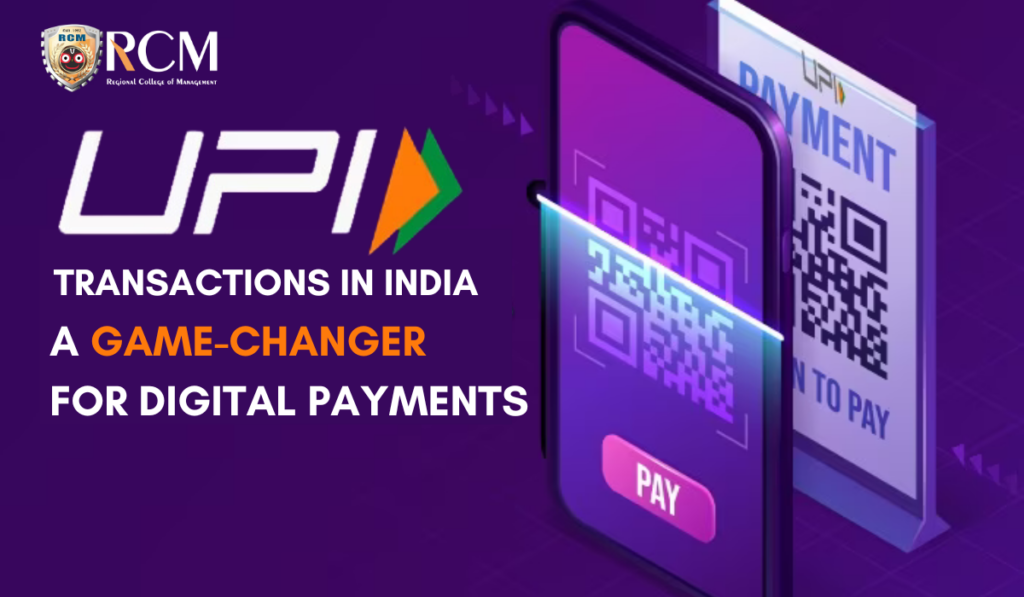In recent years, India has witnessed a remarkable transformation in the way financial transactions are conducted. The advent of Unified Payments Interface (UPI) has revolutionized the digital payment landscape, offering a secure, convenient, and efficient platform for transferring funds. UPI has emerged as a game-changer, empowering millions of Indians to go cashless and contributing significantly to the growth of the digital economy. In this blog post, we will delve into the world of UPI transactions in India, exploring its inception, key features, and the remarkable growth it has witnessed.
Understanding UPI: A Brief Overview
The National Payments Corporation of India (NPCI) launched the Unified Payments Interface in April 2016. UPI is a real-time payment system that enables users to link multiple bank accounts to a single mobile application. It simplifies peer-to-peer transactions, enabling users to send and receive money instantly using their smartphones.
Key Features and Advantages of UPI
Simplicity and Convenience: UPI provides a seamless and user-friendly interface, allowing individuals to transact with ease. Users can create a virtual payment address (VPA) and link it to their bank accounts, eliminating the need to remember complex bank details.
Instant Fund Transfers: UPI enables instant fund transfers 24/7, irrespective of bank holidays or weekends. The real-time settlement feature ensures that the money is credited to the recipient’s account immediately, enhancing the overall user experience.
Security and Authentication: UPI transactions are highly secure, leveraging two-factor authentication methods such as PIN, fingerprint, or facial recognition. The system adheres to stringent security protocols, providing users with peace of mind while conducting digital transactions.
Interoperability: UPI is an interoperable system, allowing users to transfer funds across different banks using a single platform. This eliminates the need to maintain separate wallets or accounts for different banking institutions.
Diverse Use Cases: UPI transactions extend beyond peer-to-peer transfers. The system facilitates payments for utility bills, online shopping, ticket bookings, and even enables cash-on-delivery transactions.
Unleashing the Growth of UPI
Since its inception, UPI has witnessed an unprecedented growth trajectory, transforming the digital payments landscape in India. Here are some key factors contributing to its remarkable success:
Government Support: The Indian government, as part of its Digital India initiative, has actively promoted and supported the adoption of UPI. Initiatives such as demonetization and the introduction of Aadhaar-based KYC have further accelerated the uptake of digital payment systems.
Merchant Acceptance: The widespread acceptance of UPI among merchants, both online and offline, has played a crucial role in its growth. From street vendors to established businesses, a growing number of merchants are embracing UPI as a preferred mode of payment due to its simplicity and low transaction costs.
Increasing Smartphone Penetration: The exponential growth of smartphone users in India has provided a fertile ground for UPI adoption. With affordable smartphones and internet connectivity becoming more accessible, individuals across different socioeconomic backgrounds can now transact digitally.
Competitive Ecosystem: The UPI ecosystem in India is highly competitive, with various players offering user-friendly interfaces and innovative features. This healthy competition has driven continuous improvements, enhancing the overall user experience and further fueling the growth of UPI.
Remarkable Growth Statistics
The growth of UPI transactions in India has been nothing short of phenomenal. As of June 2023, UPI has achieved the following milestones:
- Monthly Transaction Volume: UPI transactions have surpassed the 3 billion mark per month, with consistent month-on-month growth. This exponential increase showcases the growing trust and confidence in digital payment systems.
- Transaction Value: The total transaction value processed through UPI has witnessed a substantial rise, reaching several trillion rupees on a monthly basis. This demonstrates the widespread adoption of UPI for both small and large-value transactions.
- User Base: The UPI user base has crossed the 1 billion mark, indicating its popularity and wide acceptance among the Indian population. The simplicity and convenience of UPI have attracted users from various age groups and geographies, contributing to its massive user base.
Future Outlook and Potential Challenges
Looking ahead, the future of UPI transactions in India appears promising. The ecosystem is poised to witness continued growth, driven by factors such as increased digital literacy, expansion of the merchant network, and innovative payment solutions. However, there are challenges to address, including improving cybersecurity measures, enhancing network infrastructure, and ensuring last-mile connectivity in rural areas to foster financial inclusion.
Conclusion
The Unified Payments Interface has revolutionized the digital payments landscape in India, empowering millions to embrace cashless transactions. UPI’s simplicity, convenience, and security have propelled its growth, leading to a surge in transaction volumes and user adoption. As India continues its journey towards becoming a digitally empowered nation, UPI remains a shining example of a transformative technology that has brought financial inclusion and convenience to the fingertips of every Indian citizen.
Retail digital payment volume growth remains healthy
Prof. Sanjay K. Parida, M.Com., MBA (Finance)
Academic Head, MBA,
Regional College of Management, Bhubaneswar.

















20 Comments
I truly appreciate your technique of writing a blog. I added it to my bookmark site list and will
Pretty! This has been a really wonderful post. Many thanks for providing these details.
Pretty! This has been a really wonderful post. Many thanks for providing these details.
I do not even know how I ended up here but I thought this post was great I do not know who you are but certainly youre going to a famous blogger if you are not already Cheers
Hey there You have done a fantastic job I will certainly digg it and personally recommend to my friends Im confident theyll be benefited from this site
hiI like your writing so much share we be in contact more approximately your article on AOL I need a specialist in this area to resolve my problem Maybe that is you Looking ahead to see you
Very well put on display. Thanks for sharing the information. Every quote was great.
I liked it as much as you did. Even though the picture and writing are good, you’re looking forward to what comes next. If you defend this walk, it will be pretty much the same every time.
I genuinely admire the way you write blogs. I bookmarked it and will return to it. Excellent post. Right now, I’m learning something difficult and completely new from websites with excellent articles or reviews.
Thanks to the high-quality content and the administrator’s active involvement, the site’s reputation will undoubtedly improve soon.
Thanks to the high-quality content and the administrator’s active involvement, the site’s reputation will undoubtedly improve soon.
Somebody essentially help to make significantly articles I’d state. This is the first time I frequented your web page and up to now? I surprised with the research you made to make this actual post incredible. Fantastic job!
I loved even more than you will get done right here. The picture is nice, and your writing is stylish, but you seem to be rushing through it, and I think you should give it again soon. I’ll probably do that again and again if you protect this hike.
Naturally, I like your website, but you ought to edit a couple of your writings. Since many of them have grave spelling errors, it is hard for me to be honest about them. Still, I will most certainly be back.
Hi my loved one I wish to say that this post is amazing nice written and include approximately all vital infos Id like to peer more posts like this
I do not even know how I ended up here but I thought this post was great I do not know who you are but certainly youre going to a famous blogger if you are not already Cheers
Over the past week, I’ve been an avid visitor to this awesome website with top notch user content. The site owner excels at engaging visitors. I’m so happy and hope they keep up their magnificent work.
I do agree with all the ideas you have introduced on your post They are very convincing and will definitely work Still the posts are very short for newbies May just you please prolong them a little from subsequent time Thank you for the post
I do not even know how I ended up here but I thought this post was great I dont know who you are but definitely youre going to a famous blogger if you arent already Cheers
I have read some excellent stuff here Definitely value bookmarking for revisiting I wonder how much effort you put to make the sort of excellent informative website
This was a refreshing read, different from the usual content out there.